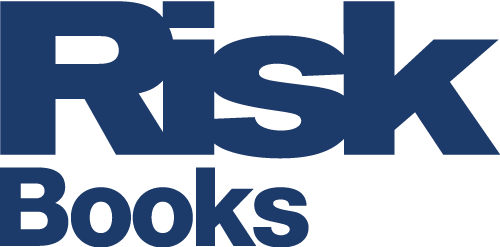Internal Credit Risk Models
A practical, accessible step-by-step analysis of the theory and practicalities of credit risk measurement and management.
The authoritative introduction to internal credit risk modelling and management for financial institutions
Topics covered include: default probabilities; expected and unexpected losses; time effects; default correlations; and loss distributions
| ISBN | 9781899332038 |
|---|---|
| Publication date | 1 Apr 1999 |
| Size | 155mm x 235mm |
Michael K. Ong
Michael K. Ong
Dr. Michael K. Ong is currently Professor of Finance at the Stuart School of Business, Illinois Institute of Technology. He was formerly the Director of the Finance Program and the Executive Director of the Center for Financial Markets. Prior to his retirement from the financial industry, Professor Ong was Executive Vice President and Chief Risk Officer for Credit Agricole Indosuez in New York. He has enterprise-wide responsibility for all risk management functions for corporate banking, merchant banking, asset management, capital markets activities, and the brokerage division. He was a member of the Executive Committee. Before that, he was Head of Enterprise Risk Management for ABN-AMRO Bank, responsible for management information and decision support function for the Executive Committee regarding enterprise-wide market, credit, operational, and liquidity risk, as well as RAROC, ROE, and related optimization models. Prior to that, Dr. Ong was Head of Corporate Research Unit for First Chicago NBD Corporation. The unit supports the Bank in its global enterprise-wide risk management function – market and credit risk analyses and the allocation of economic capital – and oversees the quantitative research units of the trading areas. Earlier on, he served as an assistant professor of mathematics at Bowdoin College for seven years with his research specialty in mathematical physics.
He is a member of the Editorial Board of the Journal of Financial Regulation and Compliance, the Journal of Credit Risk, and the Journal of Risk Management for Financial Institutions. He was the founding editor and Editor-in-Chief of the Journal of Credit Risk, and was on the editorial board of the Journal of RISK and The RMA Journal.
He is author or editor of the following best-selling books: Internal Credit Risk Models – Capital Allocation and Performance Measurement (Risk Books,1999); Credit Ratings – Methodologies, Rationale and Default Risk (Risk Books, 2002); The Basel Handbook – A Guide for Practitioners (Risk Books, 2004); Risk Management – A Modern Perspective (Elsevier, 2006);The Basel Handbook, 2nd Ed. (Risk Books, 2007).
Dr. Ong is widely recognized in the financial industry for his work on portfolio credit risk modelling, RAROC, economic capital allocation, operational risk, enterprise risk management, his very active involvement in regulatory issues, and his thoughtful candor on issues affecting the financial industry in general.
On Basel, Regulation and Market Responses Past and Present
Origins of the Regulatory Capital Framework
Some Historical Perspectives
Historical Rational for the Capital Accord
Credit Risk, Regulatory Capital and the Basle Accord
Evolutionary Nature of Capital Regulation
Market Response: Clamour for Internal Credit Models
Game Theory: Regulatory Capital Arbitrage
Securitisation of Assets
Concerns Raised by Securitisation
Role of Credit Derivatives
Summary of Federal Deposit Insurance Corporation Improvement Act 1991
Regulatory Capital Rules
Overview of Approach
Essential Components of the Internal Credit Risk Model
Outline of Model Components
Preview of Following Chapters
Modelling Credit Risk
Elements of Credit Risk
Default Risk
Measuring Default Probability - Empirical Method
Measuring Default Probability - The Options Theory Approach
Theoretical EDFs and Agency Ratings
Credit Risk Models
Value of Risk Debt
States of the Default Process and Credit Migration
Merton’s Options Theory Approach to Risky Debt
Default Probability, the Default Point and the Distance to Default
Mathematical Preliminary
The Multi-State Default Process and the Probability Measure
Loan Portfolios and Expected Loss
Expected Loss
Adjusted Exposure: Outstandings and Commitments
Covenants
Adjusted Exposure
Usage Given Default
Loss Given Default and the Risky Part of V1
Mathematical Derivation of Expected Loss
Parameterising Credit Risk Models
Unexpected Loss
Causes of Unanticipated Risk
Unexpected Loss
Economic Capital and Unexpected Loss
Derivation of Unexpected Loss (UL)
Portfolio Effects: Risk Contribution and Unexpected Losses
Comparing Expected Loss and Unexpected Loss
The Analysis Horizon and Time to Maturity
Portfolio Expected Loss
Portfolio Unexpected Loss
Risk Contribution
Undiversifiable Risk
Risk Contribution and Correlation of Default
Variation in Asset Value due to Time Effects
Derivation of Portfolio UL
Derivation of Portfolio RCk
Correlation of Default and Credit Quality
Correlation of Credit Quality
Correlation of Default
Default Correlation Matrix and Some Important Observations
Industry Index and Asset Correlation
Estimating Asset Correlation
Obligor-Specific Risk
Further Generalisation to the Multifactor Case
Some Comments and Suggestions
Correlation of Default
First-Passage Time Model of Default Correlation
Industry Default Correlation Matrix
Correlation of Joint Credit Quality Movement
Loss Distribution for Credit Default Risk
Choosing the Proper Loss Distribution
The Beta Distribution
Economic Capital and Probability of Loss
Extreme Events: Fitting the Tail
Monte Carlo Simulation of Loss Distribution
Simulating the Loss Distribution
Some Observations From the Examples
Why EVT and not just Simulation
Mathematics of Loss Simulation
Simulating Default and the Default Point
Extreme Value Theory
Fundamental Regimes for Losses
Extreme Value Theory - Some Basics
Generalised Pareto Distribution
Convergence Criteria
Thresholds Revisited
The Mean Excess Function
History Repeating by Alexander McNeil
Risk-Adjusted Performance Measurement
Risk-Adjusted Performance Measurement
Raroc Defined
Dissecting the Raroc Equation
Approaches to Measurement: Top-Down or Bottom-Up
Revised RAPM
Implementing the Internal Model Across the Enterprise
Sample Portfolio
Negative Raroc
Parameterising and Calibrating the Internal Model
Interpreting the Results of Raroc
Enterprise-Wide Risk Management and RAPM
Sample Credit Portfolio
On to the Next Steps
Credit Concentration and Required Spread
The Credit Paradox
Causes of Concentration Risk
Credit Concentration and Required Spread
The Loan Pricing Calculator
Mathematics of the Loan Pricing Calculator
Epilogue: The Next Steps
Internal Credit Risk Ratings
Data Quality and Opaqueness
Techniques for Assessing Extreme Loss Distributions
Risk-Adjusted Performance Measurement and Risk-Adjusted Pricing
Multi-State Default Process, Marking-to-Market and Multi-Year Analysis Horizons
Differences Between Vendor Models
Integration of Market Risk and Credit Risk
The Multi-State Default Process
Matching Transition Matrices to Historical Data
Appendix
Raroc Remodelled
Tom Wilson
Many Happy Returns
Sanjeev Punjabi
Reconcilable Differences
H. Ugur Koyluoglu and Andrew Hickman
Refining Ratings
Ross Miller
A Credit Risk Toolbox
Angelo Arvanitis, Christopher Browne, Jon Gregory, and Richard Martin



